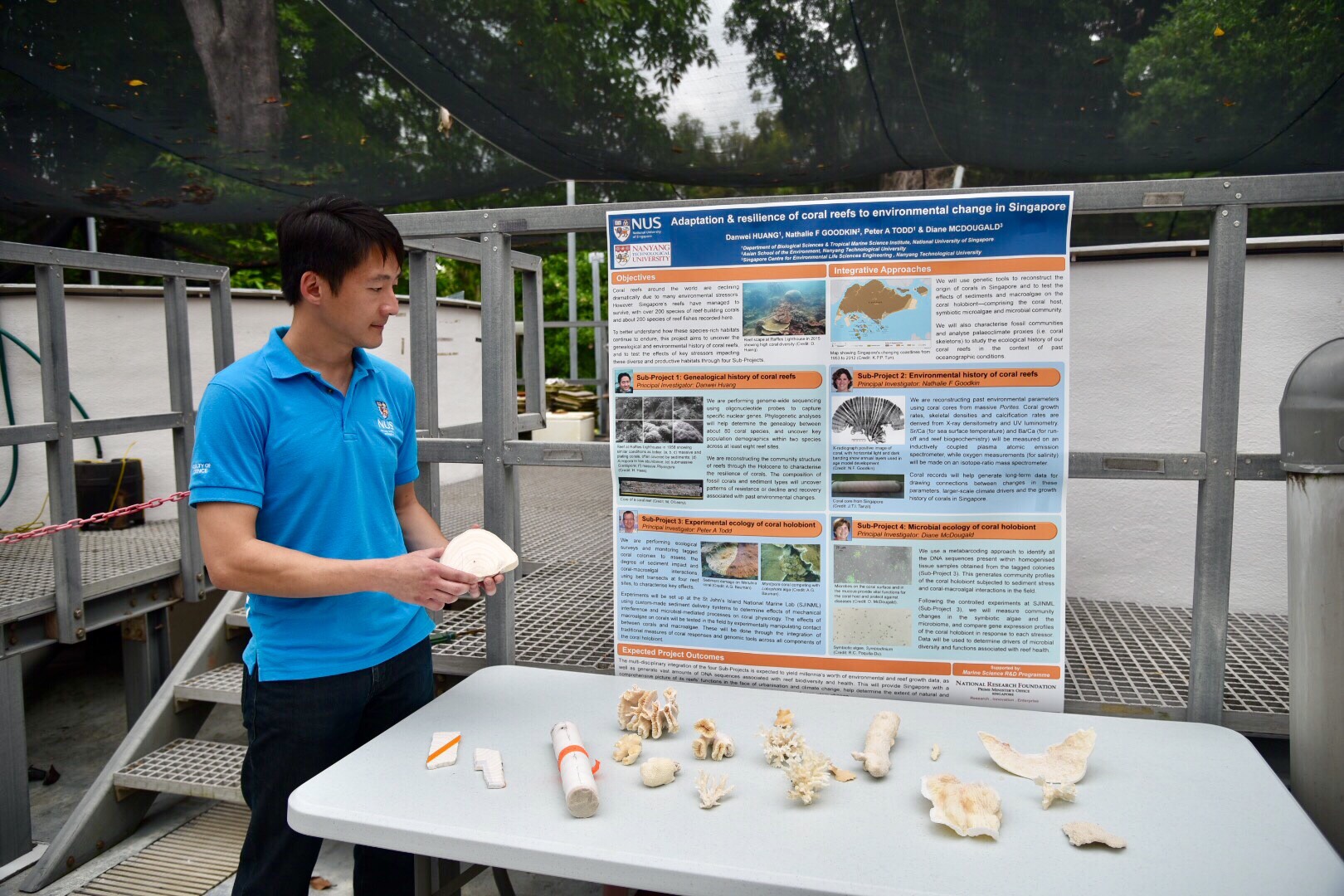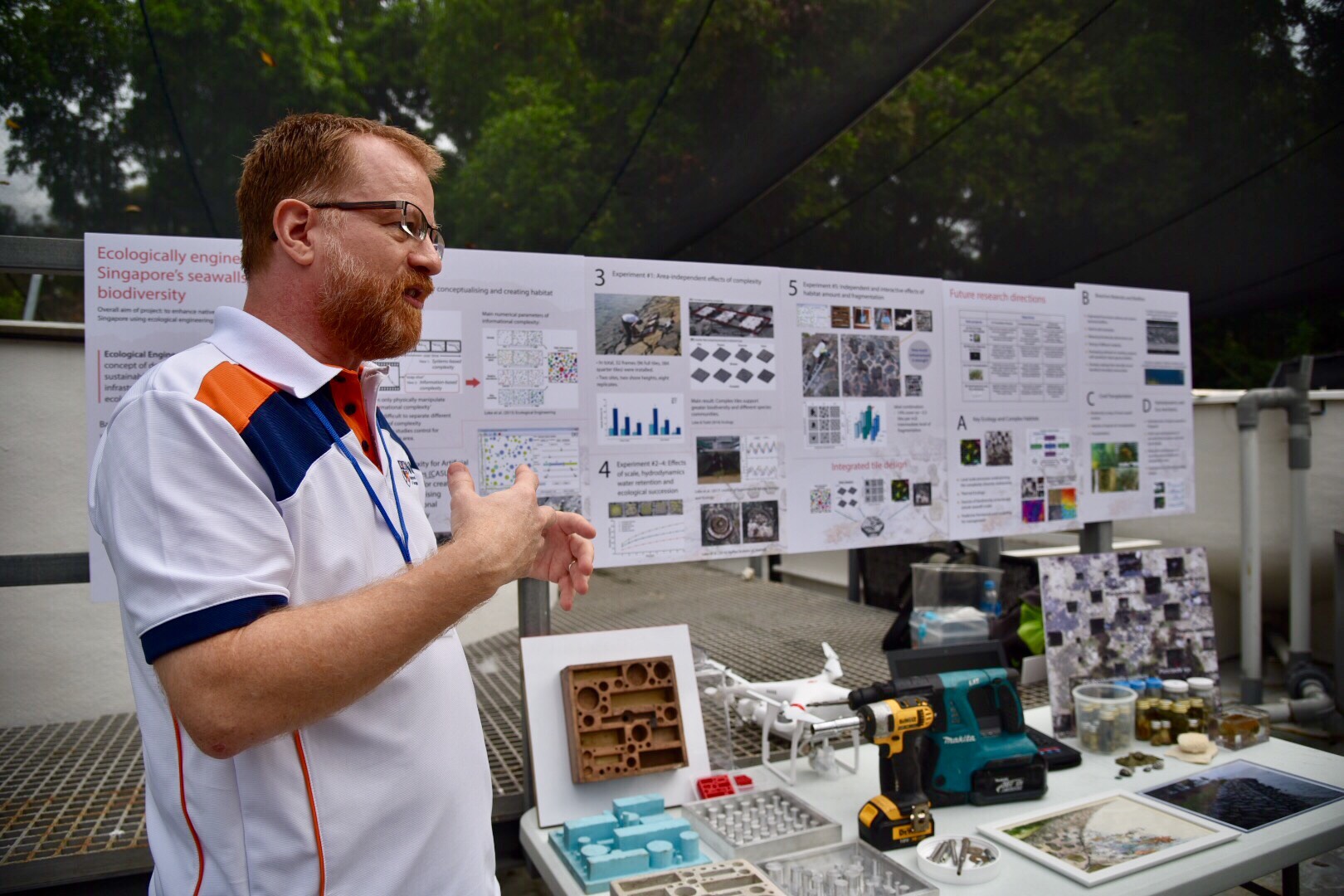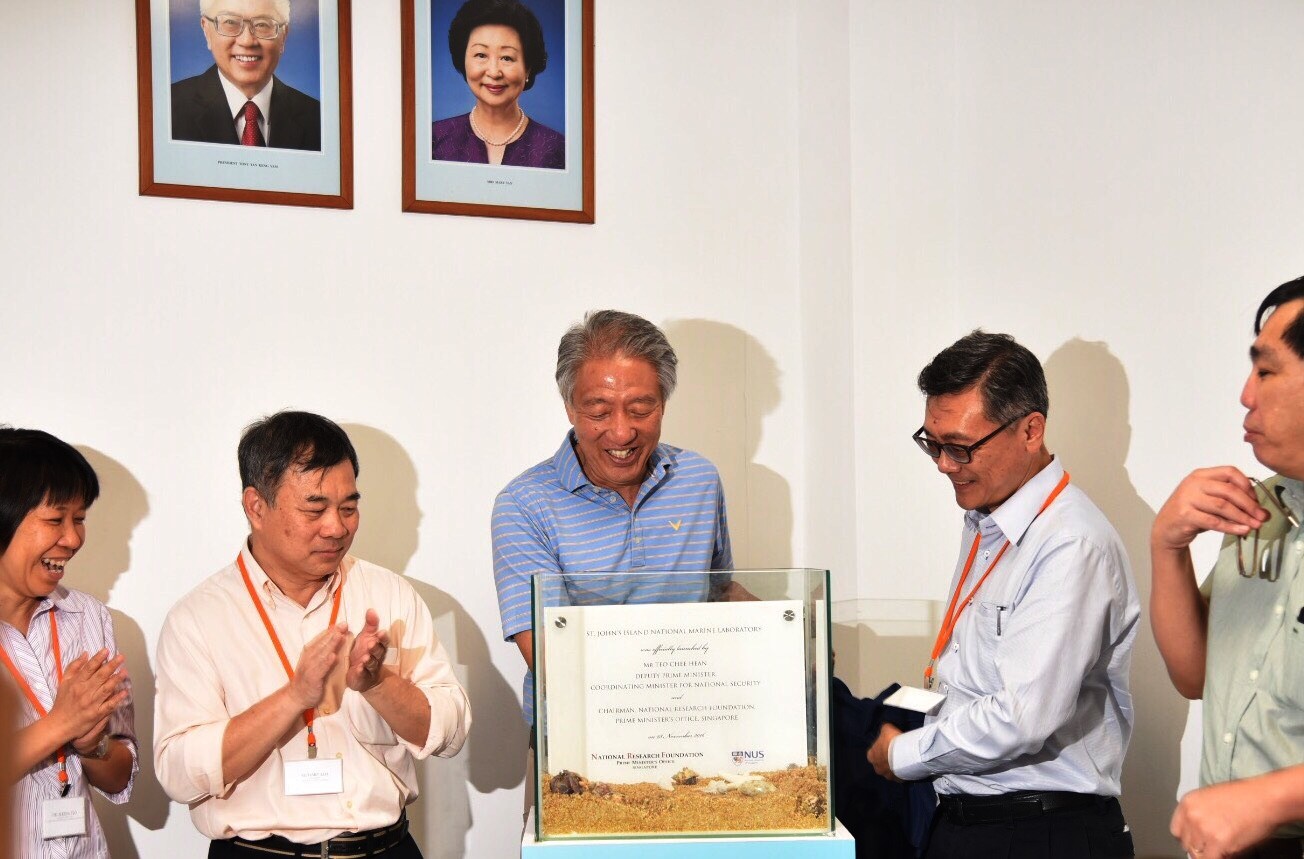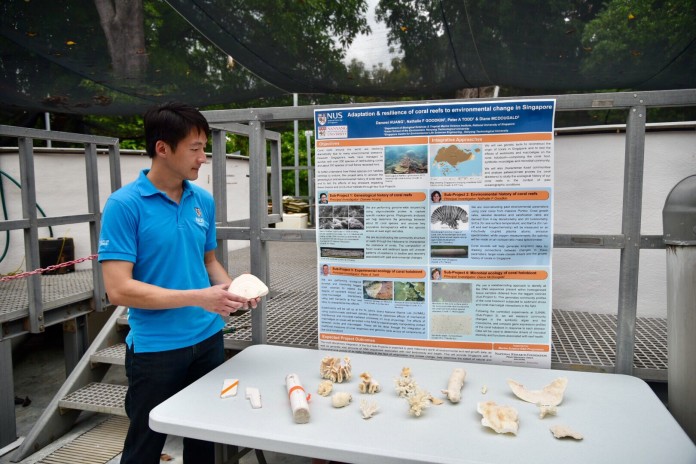SINGAPORE: Singapore has one of the most urbanised marine environments in the world. And yet coral reefs are thriving in its waters, with more than 200 species of reef-building corals and about 200 species of fishes documented on reefs here.
A research project by the National University of Singapore (NUS) hopes to find out why these reefs have managed to survive.
The project is one of seven awarded by the Government under the National Research Foundation’s (NRF) marine science research and development programme. Deputy Prime Minister and NRF chairman Teo Chee Hean made the announcement at the official launch of the St John’s Island National Marine Laboratory on Monday (Nov 28).
NRF will invest S$25 million over five years in the programme, which hopes to develop more talent in marine science research by training research scientists, engineers and PhD students in the field. There will also be internships and collaborative partnerships with industry for technology development and applications.
“As a low-lying island, global warming and the rise in sea levels and temperatures can pose challenges to our marine ecosystems,” said Mr Teo, adding that the environmental health of Singapore’s waters will also affect Singapore’s water supply, which is partly from desalination. “It will also impact aquaculture which provides a local food source.
“Therefore, it is important for Singapore to build up a good understanding of tropical marine science and our marine environment.”
PROJECTS TO ADDRESS “PERTINENT NATIONAL CHALLENGES”: DPM TEO
Mr Teo said the seven awarded projects will address “pertinent national challenges.” They cover a variety of topics including the development and decline of algal blooms in Singapore, increasing the biodiversity on seawalls in Singapore, and the NUS project on how Singapore’s coral reefs have thrived.
“Given all the environmental impact caused by land reclamation and coastal development, we should actually see no reefs in Singapore,” said the project’s principal investigator Assistant Professor Huang Danwei from NUS’s Department of Biological Sciences. “We want to understand what the reefs were like in the past, and how the circumstances affected what they are today.”

Assistant Professor Huang Danwei from NUS shows how his research project hopes to understand the resilience of coral reefs in Singapore. (Photo: Lianne Chia)
Asst Prof Huang explained that his team will collect samples from at least 10 sites in Singapore to analyse the DNA and genetic makeup of these corals. They hope to understand how the corals in Singapore have adapted to the environment, and how they respond to environmental stressors like sediment or seaweed.
They also plan to examine fossil reefs, which are embedded under the living coral reefs, to find out how the reefs have changed over time. “Hopefully from that, we can build a picture of reefs over the last 50 to 100 years,” he added.
Another awarded project, also by NUS’s Department of Biological Sciences, looks at how seawalls can be built ecologically.
The project’s principal investigator, Assistant Professor Peter Todd explained that about 63 per cent of Singapore’s coastline is made up of seawalls. “We’ve had a lot of habitat loss in Singapore due to urbanisation and coastal development,” he said. “We’ve lost our soft shores, our mangroves, and replaced them with man-made shores that don’t host a lot of biodiversity.”
These seawalls are typically large areas of stone and rock, and are very simple habitats, he said. His team has developed a way of making the seawalls more complex by retrofitting concrete tiles with different types of pits and grooves that attract microorganisms. “When we fix those to existing seawalls, we can see quite a dramatic increase in biodiversity,” he explained.

Assistant Professor Peter Todd from NUS explains how the pits and grooves in his concrete tiles help encourage biodiversity on Singapore’s seawalls. (Photo: Lianne Chia)
“By increasing the biodiversity, you’re increasing the ecosystem services that come with it,” he added. “For example they supply food for the fishes that live in the coastal waters, and they can help with the filtering of water.”
NRF said it received 30 white papers since the call for projects under the programme was launched in October last year. An international evaluation panel recommended awards to the seven projects based on their quality and relevance to Singapore.
MARINE LAB WILL COMPLEMENT SINGAPORE’S RESEARCH
A well-equipped marine science facility like the St John’s Island National Marine Laboratory will also complement Singapore’s research and development the manage and conserve its waters and coastline, added Mr Teo.

Deputy Prime Minister Teo Chee Hean (centre) officially launching the St John’s Island Marine Laboratory on 28 Nov. (Photo: Lianne Chia).
The laboratory, which is Singapore’s only offshore marine research facility, was designated a national research infrastructure in March. This means that the laboratory will be open to all researchers in Singapore and international partners.
The facility will also be upgraded with new equipment to support emerging research areas. A skilled core team of scientists and technicians will also train and guide new researchers in marine science, Mr Teo said.
The laboratory will also undertake outreach and education initiatives to share research outcomes with the public. “Activities such as nature walks and residential training workshops will enhance understanding of our marine environment,” added Mr Teo.





